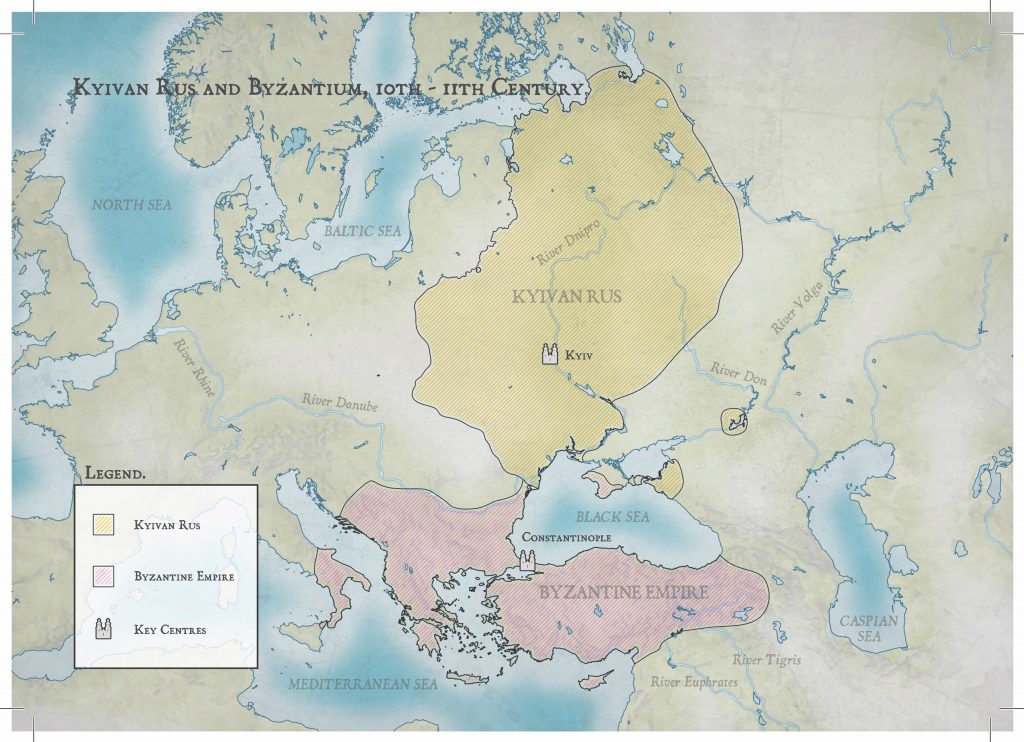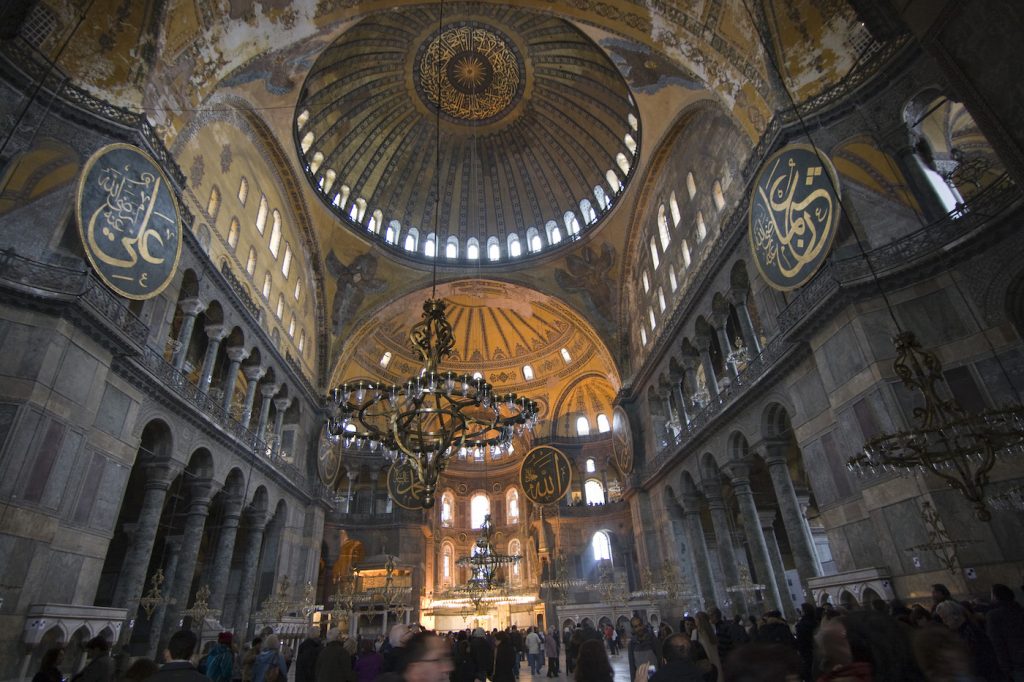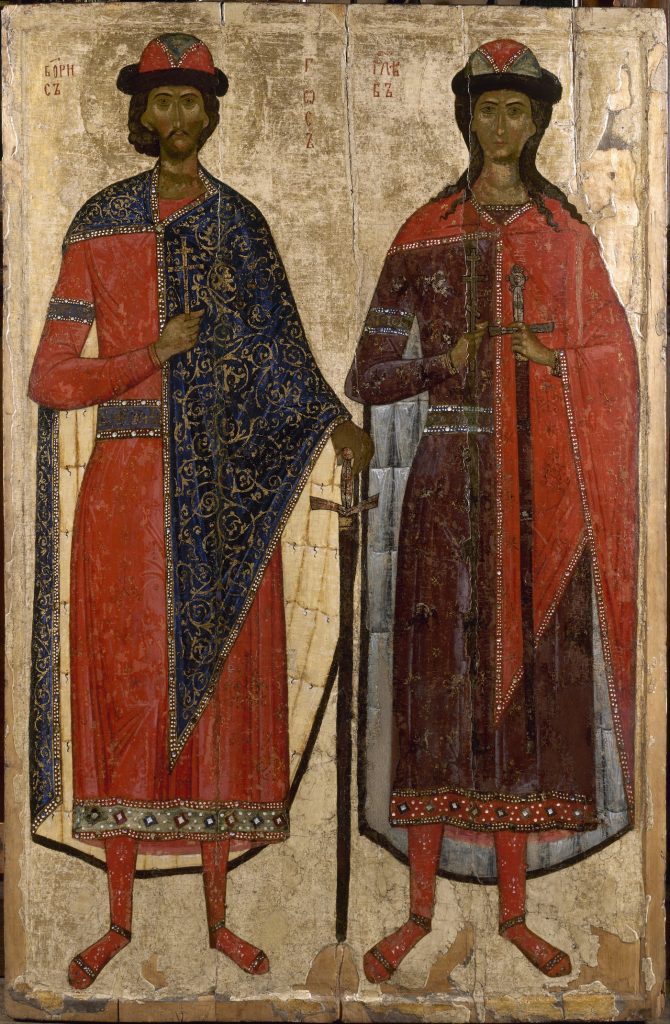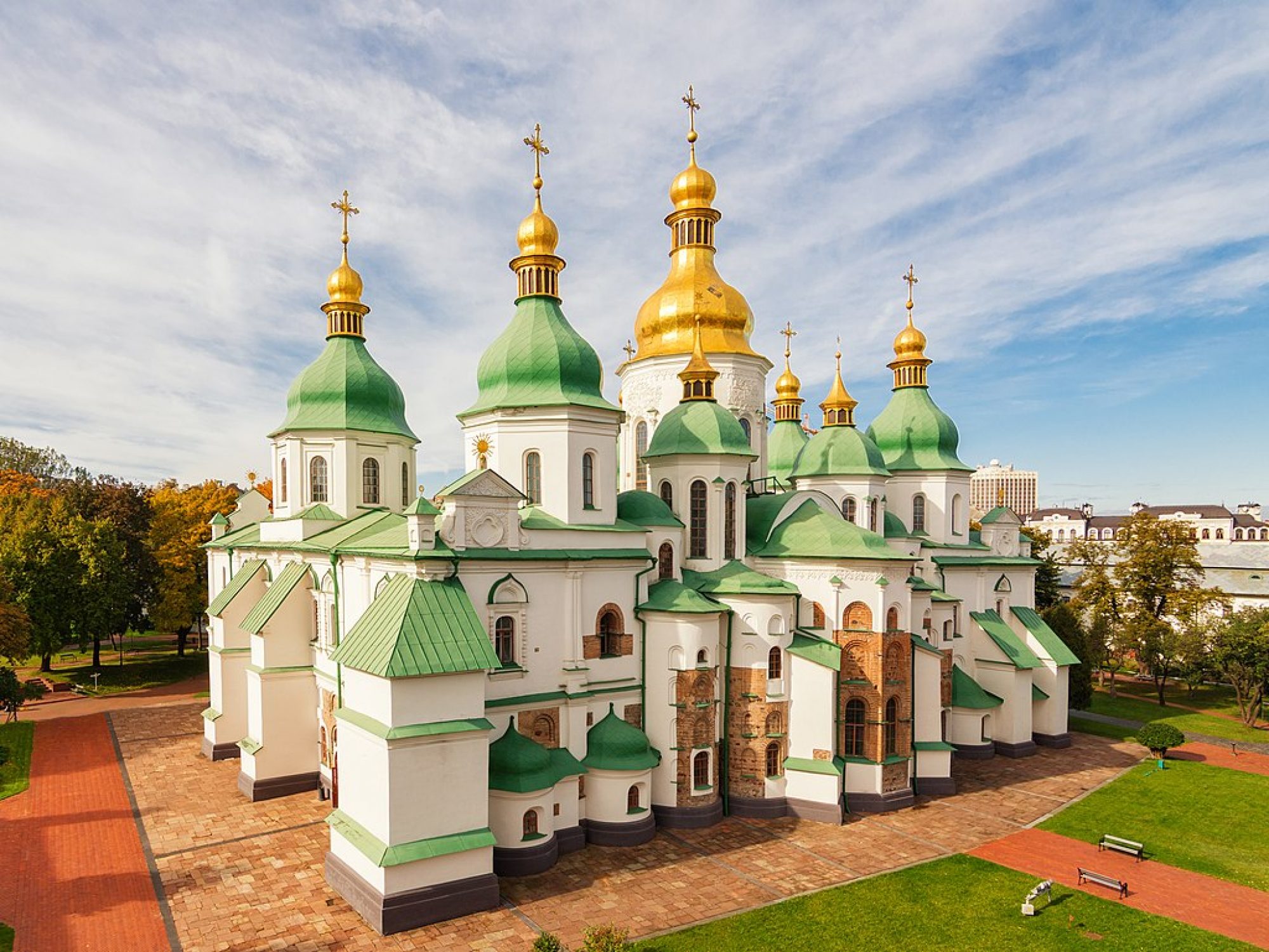Conflict and cooperation define the interactions between Kyivan Rus and the Byzantine Empire during the Middle Ages. Several wars during the ninth and early tenth centuries led to more prosperous and profitable relations, especially in the second half of the tenth century during Olha’s rule (r. 945–960). She was the first Christian leader of Kyivan Rus and valued the power of her realm. It is known that she traveled to Constantinople, where she supposedly adopted Christianity. She worked to strengthen ties with Byzantium and also with the West, seeking connections with the German lands.

The power of Byzantium succeeded in the end, and the Christianization of Rus occurred during the rule of Olha’s grandson, Volodymyr (r. 980–1015). His ambassadors traveled to Constantinople, and upon attending the liturgy in Hagia Sophia, they recounted:
…we knew not whether we were in heaven or on earth. For on earth there is no such splendor or such beauty, and we are at a loss how to describe it. We know only that God dwells there among men, and their service is fairer than the ceremonies of other nations. For we cannot forget that beauty.

This account demonstrates how Hagia Sophia’s architecture, decorations, and rituals enhanced the sanctity of the space and left remarkable impressions on all who experienced the building and sought to recreate its splendor. In ca. 1037, the Cathedral of Saint Sophia in Kyiv was built to emulate the great church of Constantinople. Architects adapted its architectural forms, sculpted, painted, and mosaic decorations, as well as its religious rituals in the Rus milieu. The Kyivan church, in turn, served as a model for religious structures throughout the realm.
The protection of military saints was similarly adapted from Byzantine models in the newly-baptized state. To the canon of Byzantine holy warriors, including Saint Demetrios, two more were added based on Rus’s history: Volodymyr’s sons, Borys (Boris) and Hlib (Gleb). They both died at the hands of their brother, Sviatopolk, who ascended the throne in 1015.

The ties to Byzantium expanded from spiritual emulation to political and diplomatic relations once Volodymyr married Anna Porphyrogenita, the sister of the Byzantine Emperor Basil II (r. 976–1025). This union not only legitimized the conversion of Kyivan Rus to Eastern Christianity, but also aligned the region with Byzantium.
Diplomatic gifts, like the famous miracle-working icon known as the Virgin of Vladimir, arrived from Constantinople, thus disseminating the prestige and spiritual power of Byzantium in the north. Contemporary sources even dubbed the city of Kyiv as a “rival to the scepter of Constantinople,” underscoring its ties to Byzantium and its important position in the Middle Ages.
